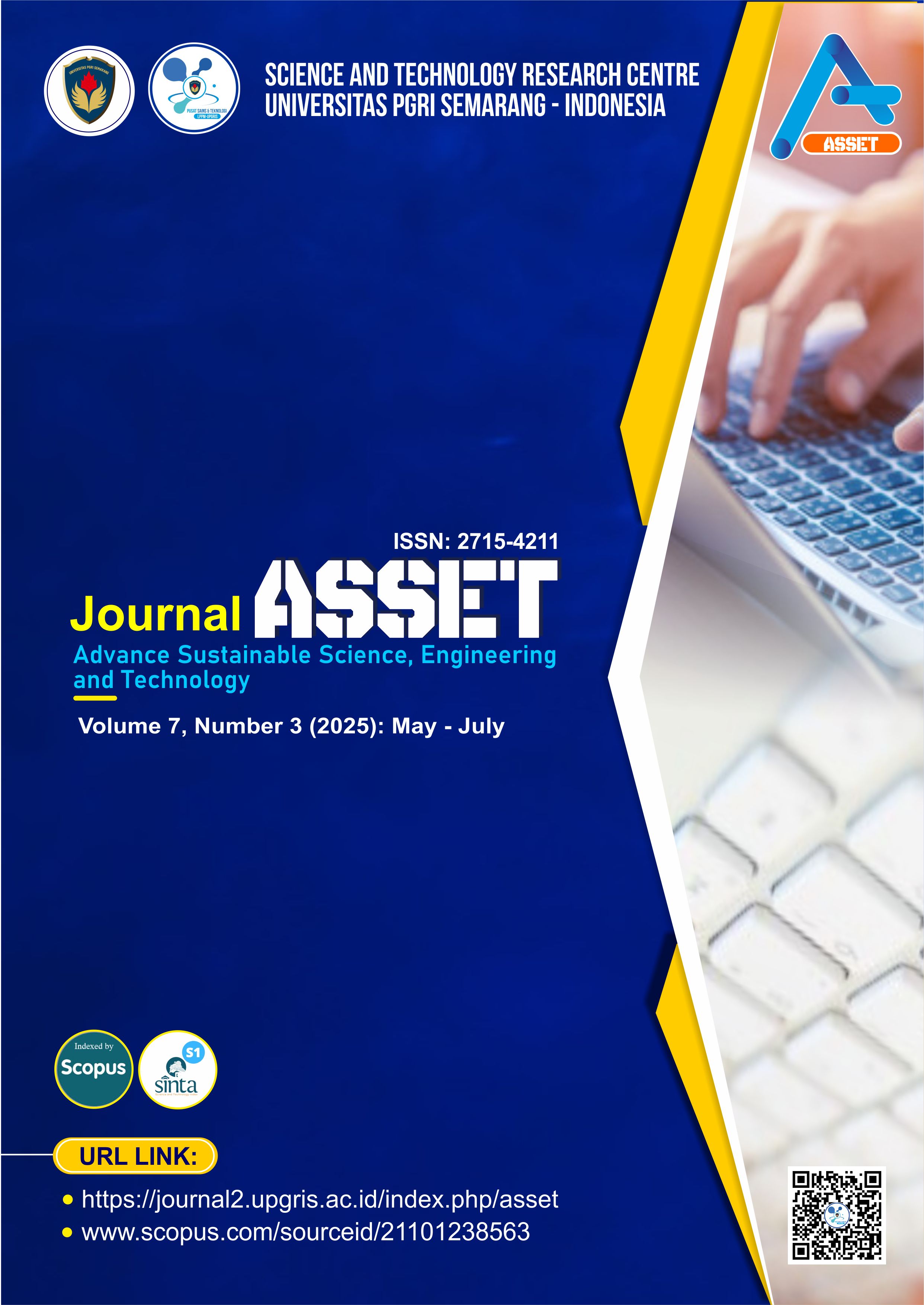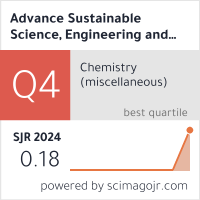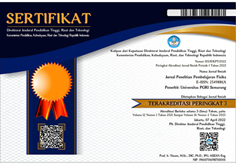Systemic Model of Driver Fatigue on Extreme Routes: PLS-SEM Analysis of Supervisor Support and Organizational Justice
DOI:
https://doi.org/10.26877/asset.v7i4.2681Keywords:
Driver fatigue, Extreme routes, Long-distance buses, Organizational justice, Supervisor supportAbstract
Driver fatigue is a critical safety concern for long-distance bus operations, particularly on the extreme route of Bima–Mataram. The study examines the impact of supervisor support and perceived penalty fairness on drivers' compliance with rest periods and levels of fatigue. Data from 114 drivers were analyzed using Partial Least Squares Structural Equation Modeling (PLS-SEM) and Importance–Performance Map Analysis (IPMA). The results indicate that supervisor support positively affects rest compliance (β = 0.38), which in turn decreases fatigue (β = –0.35); penalty fairness has a negative effect on fatigue (β = –0.29) directly. Accordingly, IPMA provides evidence that supervisor monitoring and penalty system consistency are high-impact yet underperforming priorities. These findings reveal that fatigue acts as a systemic variable developed by organizational and policy factors. The implications point out the necessity of improving supervisory capacity, penalty system reform to ensure fairness and transparency, and the integration of fatigue detection technologies to enhance safety interventions on high-risk routes.
References
[1] KNKT, 2023 Land Transportation Accident Investigation Report. Jakarta, Indonesia: National Transportation Safety Committee, 2024.
[2] A. Widyanti, I. Z. Sutalaksana, and R. Abdullah, “Fatigue among Indonesian bus drivers: A field study,” Int. J. Occup. Saf. Ergon., vol. 27, no. 2, pp. 456–464, 2021, doi: 10.1080/10803548.2020.1722312.
[3] M. L. M. Van Hooff and S. A. E. Geurts, “Need for recovery and health: A meta-analysis,” J. Occup. Health Psychol., vol. 25, no. 1, pp. 1–20, 2020, doi: 10.1037/ocp0000171.
[4] J. Msuya and S. Kumar, “Supervisor support and safety behavior in transportation operations,” Safety Sci., vol. 148, p. 105648, 2022, doi: 10.1016/j.ssci.2022.105648.
[5] M. Kogler, J. Kühnel, and S. Sonnentag, “Workplace justice and recovery from work stress,” J. Occup. Health Psychol., vol. 28, no. 1, pp. 15–29, 2023, doi: 10.1037/ocp0000321.
[6] A. B. Bakker, E. Demerouti, and A. I. Sanz-Vergel, “Job demands–resources theory: Ten years later,” Annu. Rev. Organ. Psychol. Organ. Behav., vol. 10, no. 1, pp. 25–53, 2023, doi: 10.1146/annurev-orgpsych-120920-053933
[7] J. Greenberg, “Organizational justice: Yesterday, today, and tomorrow,” J. Manag., vol. 47, no. 1, pp. 1–20, 2021, doi: 10.1177/0149206321999796.
[8] M. Yao and Y. Xu, “Method bias mechanisms and procedural remedies,” Sociol. Methods Res., vol. 53, no. 1, pp. 235–278, 2024, doi: 10.1177/00491241211043141
[9] J. F. Hair, G. T. M. Hult, C. M. Ringle, and M. Sarstedt, A Primer on Partial Least Squares Structural Equation Modeling (PLS-SEM), 3rd ed. Thousand Oaks, CA, USA: Sage, 2022, doi:10.4135/9781071878825.
[10] M. Rönkkö and E. Cho, “An updated guideline for assessing discriminant validity,” Organ. Res. Methods, vol. 25, no. 1, pp. 6–14, 2022, doi: 10.1177/1094428120968614
[11] A. Ahmad, L. S. Putranto, and D. M. Ma’soem, “Analysis of the influence of several safety variables on safety violations in inter-island passenger bus operations,” J. Mitra Tek. Sipil, vol. 8, no. 2, pp. 527–536, May 2025, doi:10.24912/jmts.v8i2.33645
[12] M. Sarstedt, J. F. Hair, and C. M. Ringle, “IPMA: Importance map analysis–performance in PLS-SEM,” Ind. Manag. Data Syst., vol. 121, no. 12, pp. 2571–2589, 2021, doi: 10.1108/IMDS-10-2020-0629.
[13] J. Escartín, M. Dollard, D. Zapf, and S. W. Kozlowski, “Multilevel emotional exhaustion: Psychosocial safety climate and workplace bullying as higher level contextual and individual explanatory factors,” Eur. J. Work Organ. Psychol., vol. 30, no. 5, pp. 742–752, 2021, doi: 10.1080/1359432X.2021.1939412
[14] M. Z. Mirza, M. A. Memon, M. U. Javaid, and R. Arshad, “Safety climate and safety behaviors: Adapting and validating a positively worded safety climate scale through the time-lagged approach,” Work, vol. 77, no. 3, pp. 1005–1016, 2024, doi: 10.3233/WOR-230150
[15] J. A. Meurs, A. M. Rossi, P. L. Perrewé, and M. J. Kolinski, “Physiological reactions to and recovery from acute stressors: The roles of chronic anxiety and stable resources,” Health Psychol. Rep., vol. 11, no. 3, p. 223, 2022, doi: 10.5114/hpr/153968
[16] M. Bullock, M. J. Stevens, D. Wedding, and A. Clinton, Eds., The Handbook of International Psychology. Abingdon, UK: Routledge, 2024.
[17] J. P. Takona, “Research design: Qualitative, quantitative, and mixed methods approaches,” Qual. Quant., vol. 58, no. 1, pp. 1011–1013, 2024, doi: 10.1007/s11135-023-01798-2
[18] S. M. Lee and J. Kim, “Effect of rest periods on fatigue and long-distance driver performance,” Transp. Res. Part F: Traffic Psychol. Behav., vol. 78, pp. 1–12, 2021, doi: 10.1016/j.trf.2021.01.004.
[19] Y. Chen and Z. Wang, “Accident causing theory in construction safety management,” in IOP Conf. Ser.: Earth Environ. Sci., vol. 638, no. 1, p. 012097, Feb. 2021, doi: 10.1088/1755-1315/638/1/012097
[20] T. W. Britt, C. J. Adler, and S. M. Bartone, “Morale and fatigue in military operations,” Mil. Psychol., vol. 13, no. 3, pp. 187–206, 2001, doi: 10.1207/S15327876MP1303_01.
[21] I. M. Reijmerink, M. J. van der Laan, J. G. Wietasch, L. Hooft, and F. Cnossen, “Impact of fatigue in surgeons on performance and patient outcome: Systematic review,” Br. J. Surg., vol. 111, no. 1, p. znad397, 2024, doi: 10.1093/bjs/znad397.
[22] H. E. Rosen, I. Bari, N. Paichadze, M. Peden, M. Khayesi, J. Monclús, and A. A. Hyder, “Global road safety 2010–18: An analysis of global status reports,” Injury, vol. 56, no. 6, p. 110266, 2025, doi: 10.1016/j.injury.2022.07.030.
[23] G. T. M. Hult, J. F. Hair, and M. Sarstedt, “An introduction to partial least squares structural equation modeling,” Long Range Plann., vol. 55, no. 5, p. 102157, 2022, doi: 10.1016/j.lrp.2021.102157.
[24] Y. Xie, L. Wang, and H. Liu, “Driver fatigue detection based on vehicle data using Attention-BiLSTM,” Safety Sci., vol. 163, p. 106076, 2023, doi: 10.1016/j.ssci.2023.106076.
[25] Q. Zhang, M. Chen, and Y. Zhao, “Real-time driver fatigue detection using facial landmarks and EAR/MAR metrics,” Appl. Sci., vol. 12, no. 4, p. 2224, 2022, doi: 10.3390/app12042224.











